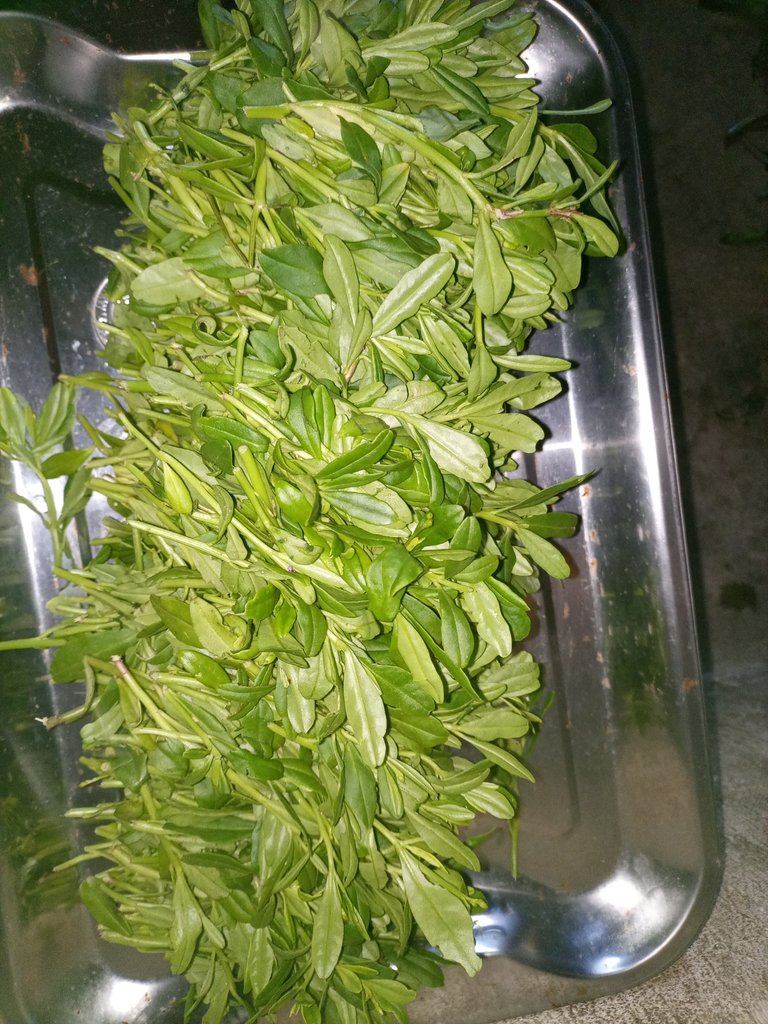Waterleaf Farming and Health Benefits: A Nutrient-Rich Green
Good morning my great people of hive community, I hope we all are doing well. I want to share a small knowledge on how to plant Waterleaf and its health benefits. Waterleaf is a very nutritional leaf eaten by a lot of person's but they don't know how to plant it and its health benefits. Keep calm and read to the end, believe me you will enjoy it.

Waterleaf (Talinum triangulare) is a leafy green vegetable that is gaining popularity for its exceptional nutritional value and health benefits. Widely cultivated in various regions, waterleaf is not only easy to grow but also packs a punch in terms of vitamins and minerals.
Waterleaf Farming: Cultivation and Characteristics
1. Growing Conditions:
Waterleaf thrives in tropical and subtropical climates. It requires well-drained soil and plenty of sunlight for optimal growth. The plant is known for its ability to adapt to different soil types, making it a resilient and accessible option for farmers.

2. Quick Growth Cycle:
One of the advantages of waterleaf farming is its relatively short growth cycle. Typically, it takes four to six weeks for the plant to reach maturity, allowing for multiple harvests in a growing season. This makes waterleaf a practical choice for farmers looking to maximize their yield.
3. Low Maintenance:
Waterleaf is a low-maintenance crop, requiring minimal care once established. Adequate watering, occasional fertilization, and protection from pests are usually sufficient to ensure a successful harvest. This ease of cultivation contributes to its popularity among both small-scale and large-scale farmers.
Health Benefits of Waterleaf Consumption:
1. Rich in Vitamins and Minerals:
Waterleaf is a nutritional powerhouse, containing essential vitamins such as vitamin A, vitamin C, and vitamin K. Additionally, it is a good source of minerals like iron, calcium, and potassium. These nutrients play crucial roles in maintaining overall health, supporting immune function, and promoting bone strength.
2. Antioxidant Properties:
The presence of antioxidants in waterleaf, including beta-carotene, helps combat oxidative stress in the body. Antioxidants are known for their ability to neutralize harmful free radicals, potentially reducing the risk of chronic diseases and supporting skin health.
3. Dietary Fiber Content:
Including waterleaf in your diet provides a significant amount of dietary fiber. Fiber is essential for digestive health, promoting regular bowel movements and aiding in the prevention of constipation. A diet high in fiber can also contribute to weight management and heart health.

4. Anti-Inflammatory Effects:
Studies suggest that waterleaf may possess anti-inflammatory properties. Chronic inflammation is linked to various health issues, including heart disease and arthritis. Regular consumption of waterleaf may help mitigate inflammation and contribute to overall well-being.
Incorporating Waterleaf into Your Diet:
1. Culinary Versatility:
Waterleaf can be incorporated into a variety of dishes. It is commonly used in soups, stews, salads, and smoothies. Its mild flavor and tender texture make it a versatile ingredient that complements a wide range of recipes.
2. Nutrient Retention:
To preserve the maximum nutritional value, it is advisable to cook waterleaf using methods that retain nutrients, such as steaming or lightly sautéing. Avoid overcooking, as this may lead to nutrient loss.

In conclusion, waterleaf farming presents a sustainable and nutrient-rich option for cultivating a leafy green with numerous health benefits. Whether you are a farmer seeking an easy-to-grow crop or an individual looking to enhance your diet, waterleaf deserves consideration for its nutritional value and culinary adaptability.
Thank you for stopping by to read my article, I truly appreciate.
@tipu curate
Upvoted 👌 (Mana: 35/45) Liquid rewards.
Thank you so much
Thank you so much sir.